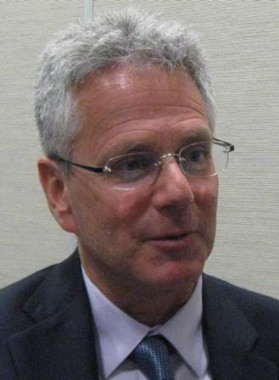SAN FRANCISCO – Suicide attempts that required treatment were more than three times as likely in teenagers who reported being bullied online, compared with youths who were not bullied, an analysis of federal data on more than 15,000 adolescents found.
Girls faced twice as much electronic bullying as boys. Cyberbullying was reported by 22% of girls and 11% of boys, according to the study of data on teens aged 13-18 years from the Centers for Disease Control and Prevention’s 2011 Youth Risk Behavior Survey, the first of its kind to ask questions about cyberbullying.
Other data suggest that 80% of U.S. teens use social networking sites, Dr. Kristi M. Kindrick said at a press briefing at the annual meeting of the American Psychiatric Association.
Among 13- to 17-year-olds, an estimated 12% have suicidal ideation, 4% plan suicide, and another 4% attempt suicide, rates that now are similar to those in adults, she noted.
The effects of online harassment on suicidal risk may be one reason that suicide is now the third leading cause of death in adolescents, behind accidents and homicides.
Dr. Kindrick and her associates found that one in six teens reported being electronically bullied, compared with one in five who said they had been bullied on school grounds. Almost 6% of high school students said they had missed school because of fears for their safety. The rate of conventional off-line bullying, such as harassment in the schoolyard, was 22% for girls (the same rate as online bullying) and 18% for boys (higher than the 11% rate for cyberbullying), reported Dr. Kindrick, a fourth-year resident in psychiatry at the University of Arkansas for Medical Sciences, Little Rock, who was moved to do the study after a young patient killed herself following cyberbullying.
Offline bullying, however, only doubled the risk for suicide, compared with the tripling in risk seen with cyberbullying, she said. Rates for the most serious cases – suicide attempts that required treatment – were 1.5% for youths who had not been bullied, 2.3% for those who reported being bullied at school, 5.4% among those who had been cyberbullied, and 6% if they had been bullied both offline and online.
Dr. Kindrick said that she is a clinician more than a researcher, and her goal is to educate communities and schools about this problem. Clinicians need to ask about bullying, sometimes in more than one way, to identify youths who are being bullied and help them cope and get help.
"Why I really care about it is because I’m a mom. I have three young children," she added.
The fact that rates of suicidal ideation, suicide planning, and suicide attempts in teens now are nearly the same as in adults belies the notion that today’s children and adolescents live carefree lives. The highest rates of cyberbullying in the study targeted white girls, she said, so "the movie ‘Mean Girls’ kind of lives up to its reputation here."
Dr. Kindrick reported having no financial disclosures.
On Twitter @sherryboschert


